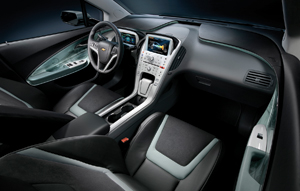
Just a couple of years ago you could comfortably say a vehicle interior was environmentally friendly if it had a few recyclable plastic trim parts and seat cushions made from soy foam.
Now, as consumers grow skeptical of green marketing campaigns and engineers learn more about energy efficiency, the bar is being raised and criteria are shifting.

Today’s environmentally conscious vehicle buyers know just because something is “natural” doesn’t mean it is environmentally friendly, and electric-car designers are learning that, ironically, electric windows may be better for battery life than those that crank by hand.
These issues emerged at the recent Ward’s Automotive Interiors Conference during a session on designing environmentally friendly interiors.
Sherry Sabbagh, principal materials designer at Johnson Controls Inc., says companies jumping on the green marketing bandwagon by making false or misleading claims – known as “greenwashing” – are causing consumers to delve into the authenticity of environmental assertions. The companies and products passing that test will win in the end, she says.
That’s why JCI is looking into raw materials such as bamboo yarn, Sabbagh says. Not only is it biodegradable, recyclable and capable of being woven into beautiful fabrics, but growing bamboo does not require lots of pesticides and fertilizer, which gives it better green credentials than many other natural fibers.
Carol Kordich, sustainable materials lead designer at Ford Motor Co., says auto makers must holistically approach to green design and look at how materials are grown, harvested and manufactured, rather than judging them only by their end-use properties.
Ebony wood is a beautiful, natural material for interior trim, she says, but collecting and processing it creates a huge carbon footprint. Mostly synthetic “engineered wood” actually is a greener product, she says.
Kordich says making seat fabrics from recycled post-industrial scrap yarn and looking at different processes for dying yarn are other ways to create greener interiors.
Tim Greig, interior design manager-EREV Design Studio at General Motors Corp., says designing the interior of the Chevrolet Volt electric car is leading to some surprising revelations in efficient use of energy in a vehicle.
Designers assumed manual window cranks would be best for the Volt because they use no electricity. But research revealed electric windows encourage drivers to cool the car by rolling all windows down at once after a car has been baking in the sun, which results in lower air conditioner loads and ultimately less energy use.
Grieg says designers also found electrically-heated seats are a net energy saver because they make occupants feel warm quickly and lead to less use of the car’s energy-gobbling cabin heating system.

